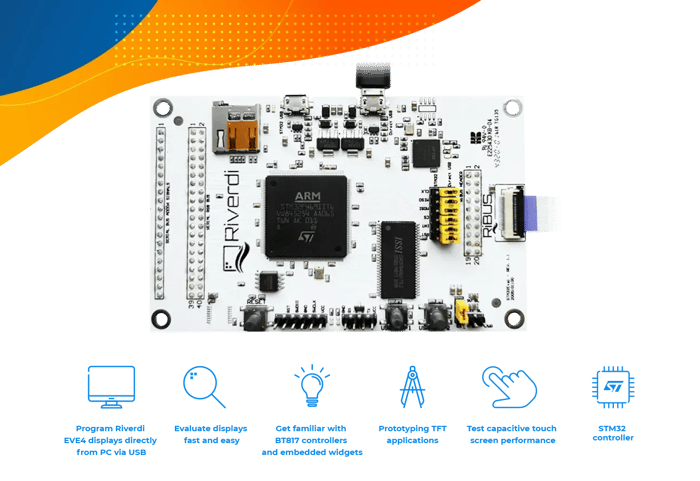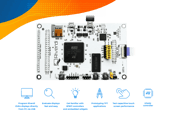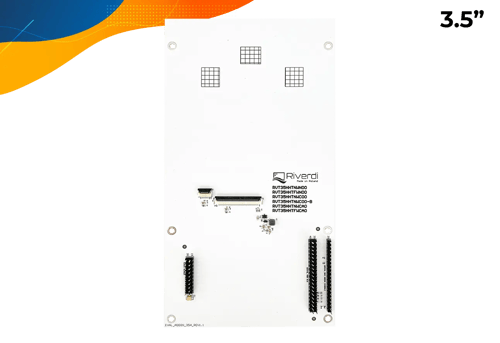Riverdi STM32 Evaluation Board is an evaluation/development board intended for development and use of applications on a wide range of Riverdi displays. It supports only Riverdi EVE4 modules for displays from 3.5” through 10.1” and Riverdi HB IPS series with RGB, LVDS and DSI interfaces (the two last types must have additional serializer) in combination with different types of touch panels.
Its most important advantage is that it allows you to work with a display in three modes:
- From STM32F469 via RiBUS (SPI) to BT817Q/EVE4 displays
- From USB via FT232H bridge to RiBUS (SPI) and then to BT817Q/EVE4 displays
- From STM32F469 LTDC TFT controller to Riverdi HB IPS displays with RGB interface and to Riverdi HB IPS displays with LVDS&DSI interfaces with serializer.
The board contains all necessary components for a successful development of graphic applications, including:
- USB Interface,
- uSD Card interface,
- 2 user programmable LEDs,
- 2 user programmable buttons,
- Debug UART interface.
While STM32 controller is powered by a USB interface, the displays can be supplied either from the same DC source or from an independent DC power source.
The STM32 Evaluation Board comes with:
- Micro USB cable
- Micro SD card
- FFC0520150
















